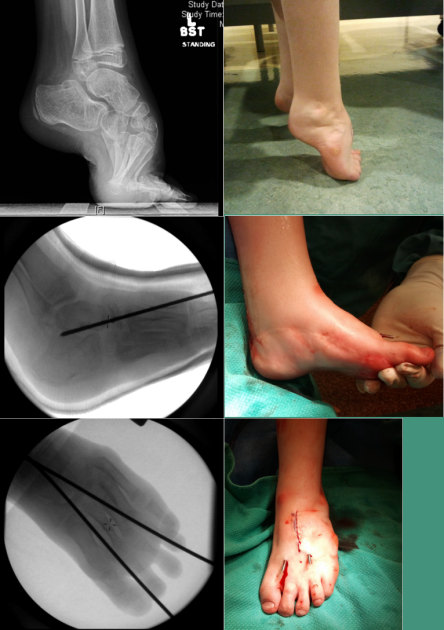Asymptomatic patients do not usually require treatment.
On the other hand, pes cavus can produce a wide spectrum of symptoms:
- Toe deformity rubbing on shoes.
- painful calluses under the metatarsal heads caused by forefoot plantar flexion and fixed toe deformity.
- Lateral foot pain and painful calluses on the lateral foot border due to hindfoot varus.
- Walking difficulty due to foot deformity or foot drop.
- Foot wear problems due to deformity.
- Ankle instability due to hindfoot varus and peroneus brevis weakness.
- Worries about progression.
The aim of treatment is to relieve symptoms and correct deformity.
- Physiotherapy has a limited role.
- Orthoses may help alleviate symptoms but do not reverse deformity.
- Surgery aims are to achieve a pain-free, plantigrade, supple but stable foot.
Surgical intervention could involve a combinations or all of the followings depending on the severity:
- Release of the plantar fascia.
- Closing-wedge dorsiflexion osteotomy of the first (± second) metatarsal.
- Calcaneum lateral sliding and closing-wedge osteotomy,
- Transfer of the peroneus longus into the peroneus brevis at the level of the distal fibula.
- Achilles tendon lengthening.
- Clawing of the toes is improved by extensor tendon lengthening or tenotomy.
- Jones procedure (extensor hallucis longus tendon transferred to the first metatarsal) with IPJ tenodesis or arthrodesis
- Midfoot dorsal closing wedge osteootmy
- Triple arthrodesis

A child with pes cavus, treated with tendoachillis lengthening and mid-foot dorsal wedge closing osteotomy.